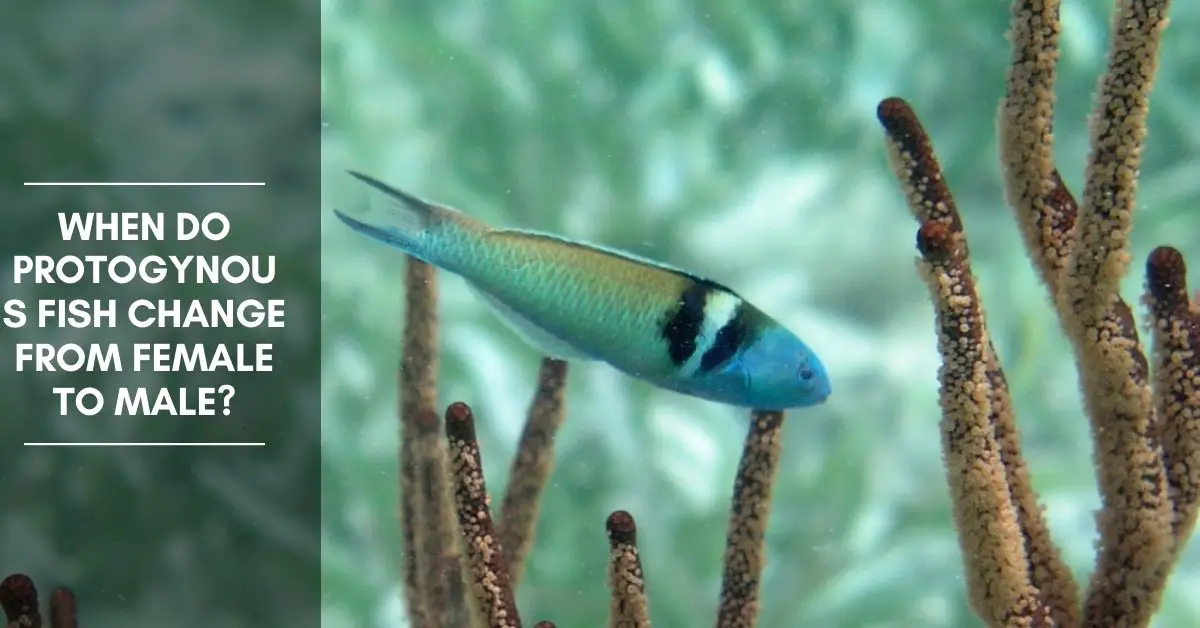Protogyny is where fish spend the first part of their lives as females before becoming males when they are older and larger – is by far the most common form of sequential hermaphroditism seen among coral reef fishes. Protogyny is seen among species of wrasses, parrotfish, and groupers, as well as in some damsels, angels, and gobies. As a result, most of the small fish seen on the coral reef are females.
What are the benefits of protogyny?
The different gender strategies that coral reef fish follow are all about one thing – maximizing the number of offspring they can produce during their lives. For the most part, small males do not get a look in on the reef; in order to mate they may often need a territory, and small fry find it tough to get a territory.
Therefore, during this early part of their adult lives is beneficial to breed as a female, because the alternative is not to breed at all. While living as females they can choose to breed with the best male, thereby securing the best genes for their offspring. If they manage to survive and grow to a good size, they may then switch to being a male themselves and. in some species, adopt their own harem of females, again boosting their reproductive capabilities.
Do wrasses turn male?
The presence of wrasse male is sometimes enough to prevent females from switching sex and becoming male themselves, although occasionally this has to be backed up by direct aggression from a male.
API STRESS COAT Aquarium Water Conditioner 16-Ounce Bottle
29% OffAPI STRESS ZYME Freshwater and Saltwater Aquarium Cleaning Solution 1-Ounce Bottle
13% OffAPI ACCU-CLEAR Freshwater Aquarium Water Clarifier 4-Ounce Bottle
19% OffCleaner wrasse
For example, male cleaner wrasse (Labroides dimidiatus) save most of their aggression for the largest females in their harem, because these are ones on the cusp of becoming male.
This bullying appears to affect the females at a hormonal level, keeping the door to becoming male firmly shut. However, if the male disappears, one of these females can change their gender within a matter of days. The problem for the developing male is that he could now lose his newly inherited harem, who all have to wait until he changes physiologically and is able to fertilize their eggs.
Tail-spot wrasse
To try to prevent this, the largest female in a group of tail-spot wrasse (Halichoeres melanurus) starts to behave like a male as little as 20 minutes after the disappearance of the dominant male, even to the point of simulating spawning with the females.
However, if the male reappears, the thwarted female rapidly reassumes her former role. In fact, there is evidence from studies on dwarf angelfish to suggest that if a breeding male is bullied enough by another male, he will revert to his old female role.
What are primary and secondary males?
If things were not already complicated enough, it seems that protogynous fish give rise to two different kinds of males. Fish that are born female and later turn into males are known as secondary males. But there is another small group of fish that seem to be born as males and remain male throughout their lives and these are known as primary males.
In some species, such as the blue-barred parrotfish (Scarus ghobban), primary males advertise their masculinity through bright colors. On the other hand, some wrasses are more sneaky and despite being male, look like the more dull-colored females. This allows them to sneak into the territories of larger males and fertilize the eggs of the females with whom they spawn clandestinely.

Hi, my name is Sean, and I’m the primary writer on the site. I’m blogging mostly about freshwater and saltwater aquariums, fish, invertebrates, and plants. I’m experienced in the fishkeeping hobby for many years. Over the years I have kept many tanks, and have recently begun getting more serious in wanting to become a professional aquarist. All my knowledge comes from experience and reading forums and a lot of informative sites. In pursuit of becoming a professional, I also want to inspire as many people as I can to pick up this hobby and keep the public interest growing.
Read more about Sean.
Please join also my Facebook group.




















